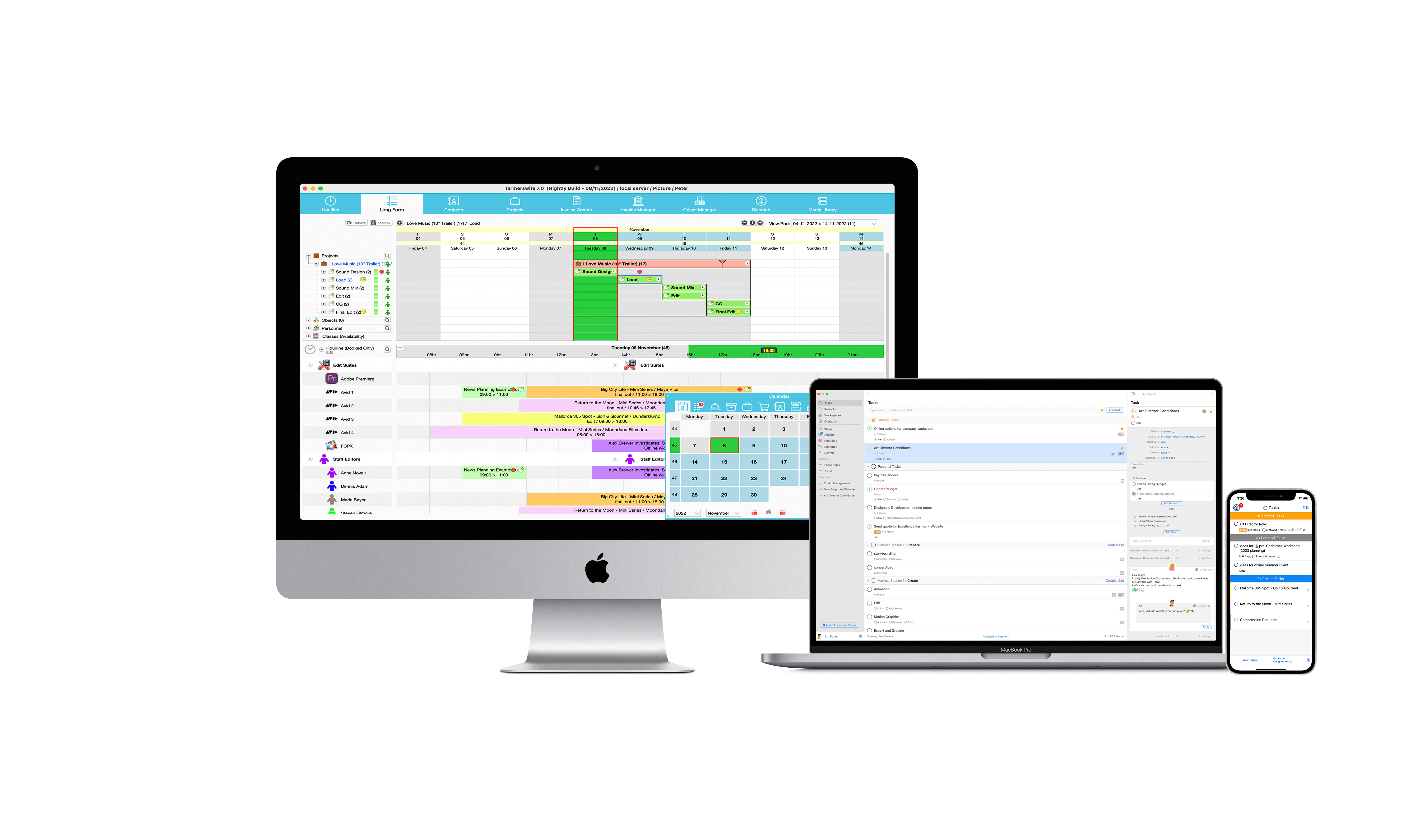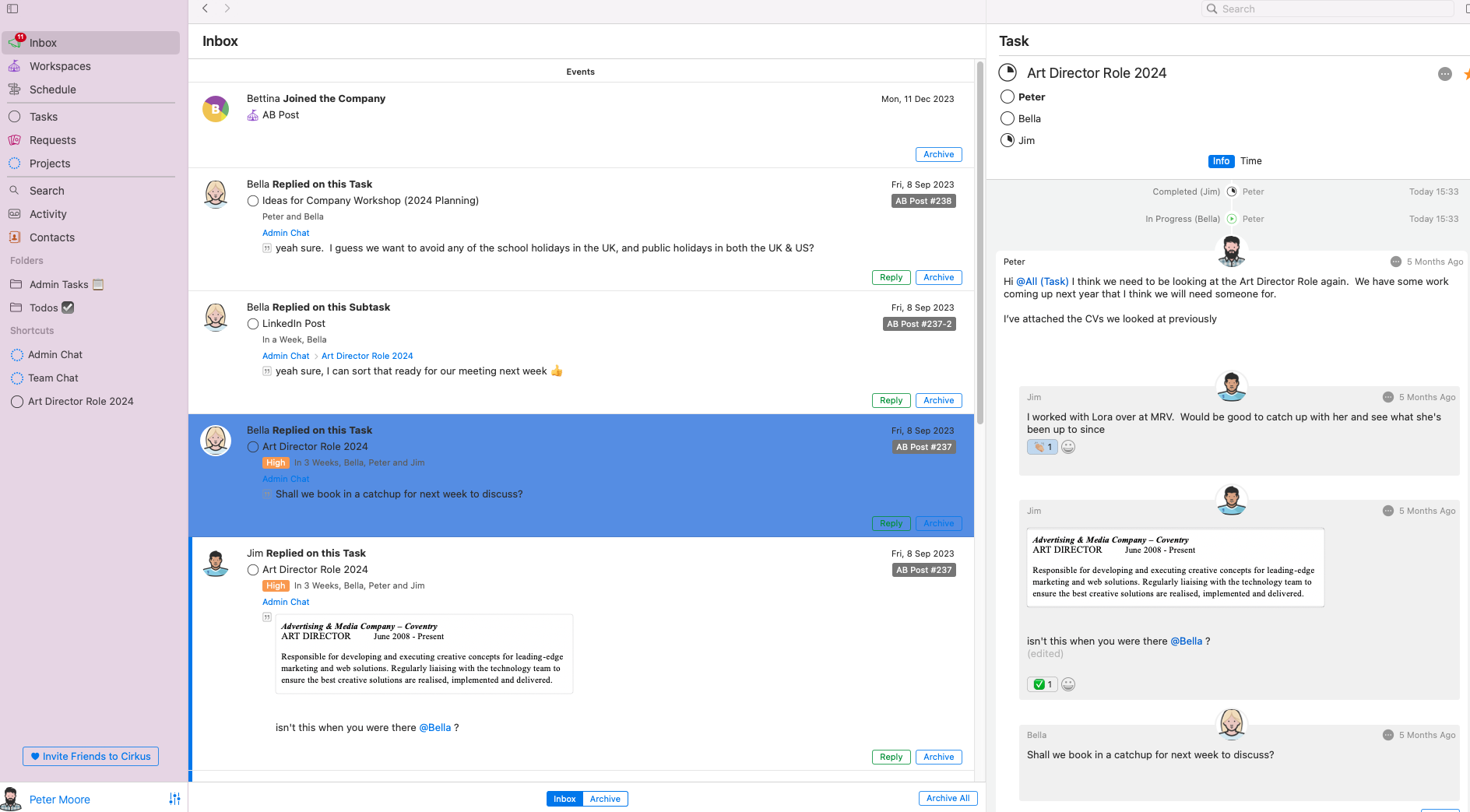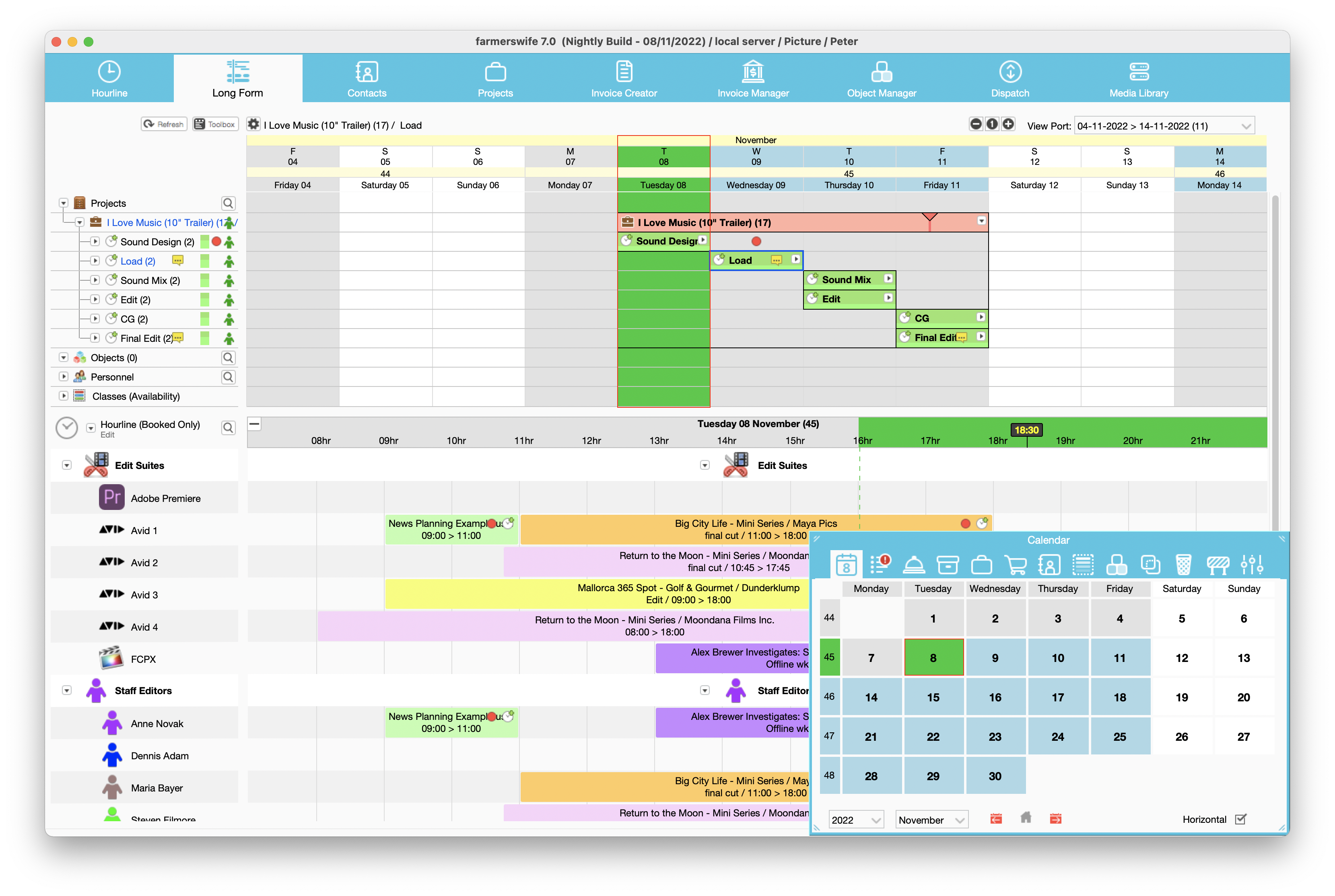In the dynamic landscape of project management, success hinges on effective planning, execution, and evaluation. Among the myriad of tools available, Cirkus and farmerswife stand out as premier solutions for scheduling and project management. In this article, we delve into the essence of Key Performance Indicators (KPIs) and how they drive project success, while highlighting the role of these innovative platforms in optimizing workflow efficiency.
Difference Between Metrics and KPIs
Metrics and Key Performance Indicators (KPIs) serve as fundamental tools in project management, yet they bear distinct characteristics. Metrics encompass a broad spectrum of quantitative data points used to measure various aspects of a project's performance, such as budget allocation, task completion rates, or customer satisfaction scores.
In contrast, KPIs are a subset of metrics specifically tailored to align with strategic objectives and critical success factors. While metrics provide a comprehensive overview of project performance, KPIs are selected for their direct relevance to overarching goals and serve as actionable insights for decision-making. Understanding what are kpis in project management and the difference between metrics and KPIs is pivotal in refining project management strategies, as it enables stakeholders to focus on the most pertinent indicators driving project success.
Types of KPIs in Project Management
Budgetary Shifts
Maintaining financial equilibrium is paramount in project management. KPIs tracking budgetary shifts provide real-time insights into expenditure patterns, enabling proactive adjustments to ensure fiscal prudence.
Alterations in Team Composition
Team dynamics play a pivotal role in project outcomes. KPIs monitoring team composition facilitate informed decisions regarding resource allocation and skill diversification, fostering synergy within the workforce.
Project Scheduling
Efficient scheduling is the backbone of project execution. With intuitive features and customizable templates, Cirkus and farmerswife streamline scheduling processes, ensuring seamless coordination and adherence to timelines.
ROI (Return on Investment)
Quantifying the return on investment is indispensable for assessing project profitability. Leveraging KPIs to measure ROI enables stakeholders to gauge the efficacy of resource utilization and strategic decision-making.
Crafting and Applying SMART Goals to Project Management KPIs
Specific: Clearly Outlined
KPIs should align with well-defined project objectives, leaving no room for ambiguity or misinterpretation.
Measurable: With Precise Data
Quantifiable metrics enable accurate assessment of progress and facilitate data-driven decision-making.
Achievable: Within Reach
Setting realistic benchmarks ensures that KPIs remain attainable, motivating teams to strive for excellence without feeling overwhelmed.
Realistic: Appropriate to the Goal
KPIs should reflect the project's scope and complexity, providing a realistic framework for performance evaluation.
Timely: With a Set Timeline
Establishing clear timelines for achieving KPIs fosters accountability and enables proactive intervention to mitigate potential setbacks.
The Role of KPIs in Project Management
Metrics and Key Performance Indicators (KPIs) serve as fundamental tools in project management, yet they bear distinct characteristics. Metrics encompass a broad spectrum of quantitative data points used to measure various aspects of a project's performance, such as budget allocation, task completion rates, or customer satisfaction scores. In contrast, KPIs, which are essentially indicators of the project's progress towards achieving its objectives and goals, are a subset of metrics specifically tailored to align with strategic objectives and critical success factors.
KPIs in project management represent quantifiable measures of project success, indicating whether the project is on track to meet its predefined targets. Project management KPIs serve as compasses, guiding project stakeholders towards predefined objectives and enabling course correction when necessary. With Cirkus and farmerswife, these objectives are translated into actionable insights, driving continuous improvement and sustainable growth. Understanding this disparity is pivotal in refining project management strategies, as it enables stakeholders to focus on the most pertinent indicators driving project success.

Examples of KPIs
In the media industry, Key Performance Indicators (KPIs) play a crucial role in assessing the performance and efficiency of various processes. Here are some examples of KPIs relevant to the media industry:
-
Project Turnaround Time: Measure the time taken to complete media projects from start to finish. This KPI helps in evaluating the efficiency of project management processes. Using farmerswife and Cirkus, you can track the time taken at each stage of production, identify bottlenecks, and streamline workflows to improve turnaround time.
-
Resource Utilization: Monitor the utilization of resources such as equipment, personnel, and facilities. With farmerswife, you can track resource allocation and availability in real-time, ensuring optimal utilization and avoiding overbooking. Cirkus can complement this by providing insights into task assignments and workload distribution among team members.
-
Client Satisfaction: Assess client satisfaction through feedback and ratings. By monitoring client satisfaction KPIs, such as response time, quality of deliverables, and adherence to deadlines, media companies can enhance client relationships and improve service quality.
-
Budget Adherence: Track project expenses against the allocated budget. farmerswife offers budget management features that allow you to set project budgets, track expenses, and generate reports for cost analysis.
-
Content Performance: Measure the performance of media content, such as viewership, engagement, and audience demographics. By analyzing KPIs related to content reach, engagement metrics, and audience retention, media companies can optimize content strategies and improve ROI.
-
Production Efficiency: Evaluate the efficiency of production processes, including pre-production, filming, editing, and post-production. Cirkus offers project management features that streamline collaboration, task assignment, and communication among production teams. Monitoring KPIs such as production cycle time, error rates, and rework frequency helps in identifying areas for improvement and enhancing overall efficiency.

Key Financial KPIs
Key Financial KPIs (Key Performance Indicators) are essential metrics that businesses utilize to assess their financial health and performance. Let's expand on the provided KPIs:
-
Rate of Revenue Growth:
This KPI measures the percentage increase in a company's revenue over a specified period. It provides insights into the company's ability to expand its market share, increase sales, and generate more income.
-
Margin of Profit:
Profit margin is a crucial metric that indicates the percentage of revenue that exceeds the company's costs of goods sold (COGS) and operating expenses. It demonstrates the efficiency of a company in generating profits from its core business activities.
-
ROI (Return on Investment):
ROI is a financial metric used to evaluate the efficiency or profitability of an investment relative to its cost. It measures the return generated from an investment compared to its initial cost.

KPIs for Sales and Marketing
When it comes to Sales and Marketing, specific KPIs play a critical role in assessing the effectiveness of campaigns and strategies:
-
Cost of Customer Acquisition (CAC):
CAC measures the cost incurred to acquire a new customer. It includes expenses related to marketing, advertising, sales personnel, and other associated costs. Calculating CAC helps organizations understand the efficiency of their customer acquisition efforts and allocate resources effectively to maximize returns.
-
Lifetime Value of a Customer (CLV):
CLV represents the total revenue a business can expect to generate from a single customer over the entire duration of their relationship. By comparing CLV to CAC, organizations can determine the profitability of acquiring and retaining customers. A higher CLV relative to CAC indicates a healthy return on investment and sustainable growth potential.
-
Lead-to-Customer Conversion Ratio:
This KPI measures the percentage of leads that successfully convert into paying customers. It reflects the effectiveness of the sales and marketing funnel in nurturing leads and guiding them through the purchasing process. Monitoring this ratio enables organizations to identify bottlenecks, optimize conversion strategies, and improve overall sales performance.
Operational KPIs
Operational KPIs are vital metrics that assess the efficiency and effectiveness of various operational processes within an organization:
-
Turnover of Inventory:
Inventory turnover measures how quickly a company sells its inventory over a specific period. It is calculated by dividing the cost of goods sold (COGS) by the average inventory value. A high turnover indicates efficient inventory management and healthy sales, while a low turnover may suggest excess inventory or slow-moving products. Monitoring inventory turnover helps businesses optimize stocking levels, minimize carrying costs, and maximize profitability.
-
Time to Respond in Customer Support:
This KPI measures the average time it takes for customer support teams to respond to inquiries or resolve issues raised by customers. Prompt responses and resolutions are critical for enhancing customer satisfaction and loyalty. By tracking time to respond, organizations can identify areas for improvement in their support processes, allocate resources effectively, and ensure timely assistance to customers, thereby fostering positive customer experiences and reducing churn rates.
-
Productivity of the Workforce:
Workforce productivity KPIs evaluate the efficiency of employees in performing their tasks and contributing to organizational goals. Metrics such as output per employee, revenue per employee, or units produced per hour can be used to measure productivity. Analyzing workforce productivity helps identify underperforming areas, optimize resource allocation, and implement strategies to enhance overall efficiency and performance. Additionally, it enables businesses to align staffing levels with workload demands, improve employee engagement, and drive sustainable growth.
By monitoring Operational KPIs, organizations can optimize performance, customize insights for stakeholders, and drive continuous improvement. Leveraging platforms like Cirkus and farmerswife enables streamlined processes, cost reduction, and operational excellence.
KPIs for Customer Service
KPIs for Customer Service provide valuable insights into the quality and effectiveness of interactions between customers and support teams:
-
-
Customer Satisfaction Score (CSAT):
CSAT measures the satisfaction level of customers based on their recent interactions with the company's products or services. Typically collected through surveys or feedback forms, CSAT scores help organizations gauge customer perceptions, identify areas for improvement, and prioritize initiatives to enhance satisfaction levels. Monitoring CSAT enables businesses to proactively address customer concerns, strengthen relationships, and drive repeat business.
-
Net Promoter Score (NPS):
NPS measures the likelihood of customers to recommend a company's products or services to others. It is based on a simple question: "How likely are you to recommend our company to a friend or colleague?" Customers provide ratings on a scale of 0 to 10, and they are classified into Promoters (9-10), Passives (7-8), and Detractors (0-6). By calculating the NPS as the percentage of Promoters minus the percentage of Detractors, organizations can assess overall customer advocacy and loyalty. Improving NPS involves addressing the concerns of Detractors, converting Passives into Promoters, and fostering positive word-of-mouth referrals.
-
Rate of Customer Turnover:
Customer turnover, also known as churn rate, measures the percentage of customers who discontinue their relationship with the company over a specific period. High churn rates can indicate dissatisfaction, ineffective retention efforts, or competitive pressures. By tracking churn rates and analyzing the reasons for customer attrition, organizations can implement targeted retention strategies, enhance service offerings, and improve overall customer satisfaction and loyalty.
-
KPIs in Human Resources
KPIs in Human Resources offer valuable insights into various aspects of employee engagement, satisfaction, and retention:
-
Rate of Employee Turnover:
Employee turnover rate measures the percentage of employees who leave the organization over a specific period. High turnover rates can indicate underlying issues such as dissatisfaction, poor management, or inadequate training and development opportunities. By tracking turnover rates across different departments or job roles, organizations can identify trends, pinpoint areas for improvement, and implement targeted retention strategies to minimize talent loss and associated costs.
-
Level of Employee Satisfaction:
Employee satisfaction reflects the overall contentment and happiness of employees with their work environment, job roles, and organizational culture. Various methods such as surveys, feedback sessions, and one-on-one meetings can be used to measure employee satisfaction. Analyzing satisfaction levels helps organizations understand employee perceptions, identify areas of strength and concern, and prioritize initiatives to enhance the workplace experience. Improving employee satisfaction can lead to higher levels of engagement, productivity, and retention, ultimately contributing to organizational success.
Leveraging KPIs Effectively
Effectively utilizing Key Performance Indicators (KPIs), especially those tailored for project management, goes beyond simply identifying metrics; it involves ongoing monitoring, detailed analysis, and proactive adjustments to evolving circumstances. Platforms like Cirkus and farmerswife provide stakeholders not just with robust reporting tools but also with user-friendly interfaces and comprehensive data visualization capabilities. These resources empower stakeholders at all organizational levels to make well-informed decisions based on real-time insights, driving project success and overall business performance.
By closely tracking KPIs, including those specific to project management, teams can spot emerging trends, identify areas for enhancement, and seize opportunities promptly. Furthermore, the ability to personalize reports and dashboards ensures that stakeholders receive pertinent and actionable information tailored to their individual roles and responsibilities. Ultimately, leveraging KPIs, especially those pertinent to project management, through sophisticated analytics platforms like farmerswife enables organizations to optimize resource allocation, mitigate risks, and effectively achieve strategic objectives in today's dynamic and competitive business environment.

Conclusion
In conclusion, the strategic incorporation of KPIs plays a vital role in the success of project management endeavors. Through the utilization of tools like Cirkus and farmerswife, organizations can streamline processes, enhance resource management, and drive towards their strategic goals with confidence and precision. Embrace the potential of KPIs and unleash the true power of your projects today.